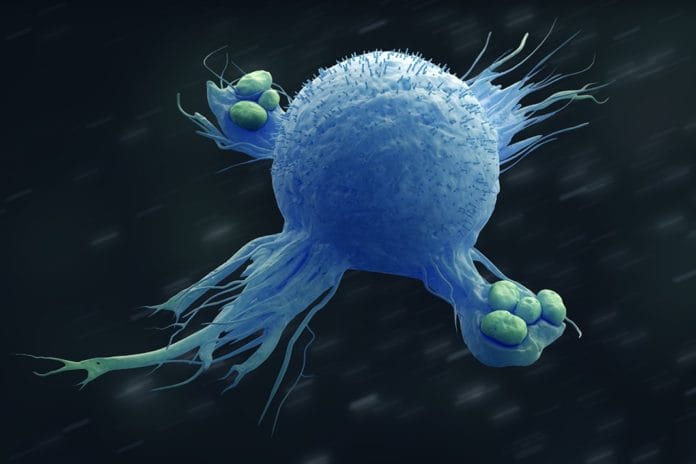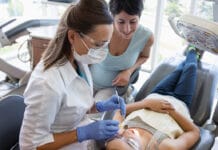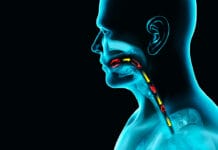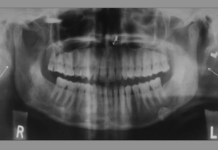The discovery of macrophage polarization by Charles Dudley Mills changed the way immunologists viewed the immune system. Prior to this discovery, it was long thought that macrophages were like a garbage disposal, gobbling up pathogens and eliminating them, serving the T and B cells as if they were royalty while the macrophages were mere servants. These beliefs were based on human physiology; immunologists were overlooking animal physiology and, by doing so, missed a huge player in the immune response.
By looking only at immune responses in humans, immunologists overlooked the fact that over 95% of animals do not have T cells, yet they are successfully surviving in a world of pathogens, all thanks to macrophages. Macrophages have the unique ability to display two opposite functions − either kill or heal.1
The human immune response to invading pathogens is complex. The microenvironment signals the immune system to develop certain subsets of T helper cells that activate certain cytokines that will fight the offending pathogen. For example, there are Th1, Th2, Th9, and Th17 responses; I wanted to mention this because the idea of the Th1/Th2 paradigm is now considered too simplistic and reductionist. This article will focus on the Th1/Th2 paradigm as it applies to macrophage polarization.2
The Th1/Th2 paradigm was discovered in 1989. The concept is defined by the cytokines that are released and their mechanism of action. Th1 responses are triggered by replicating intracellular pathogens, such as Salmonella Typhimurium or Mycobacterium tuberculosis.
Th1 is a pro-inflammatory immune response. Th2 responses are known for their contribution to defense against parasitic infections of the GI tract. However, they also contribute to the development of allergic diseases. Th2 cells also play a role in antibody production and tissue repair. Th1 response is associated with ongoing infection while Th 2 responses are associated with the progression of many chronic inflammatory diseases.6,7
Macrophage M1/M2 Mechanism of Action
What makes it possible for these immune cells to both kill invading pathogens and heal damaged tissue? The answer lies in the macrophages’ ability to metabolize arginine into either nitric oxide or ornithine. This is where the differentiation between the two phenotypes occur.
Macrophages are capable of metabolizing arginine using two different enzymes leading to two different mechanisms of action. These two mechanisms of action are defined as M1/kill and M2/heal. The microenvironment assists in the determination of the action the macrophages will take. These also correlate with either a Th1 or Th2 immune response. Th1 immune response induces M1 macrophages, and Th2 response induces M2 macrophages.1,3,4
M1/kill action is created by the metabolism of arginine with the enzyme nitric oxide synthase. This enzyme metabolizes arginine into nitric oxide. As a result, nitric oxide causes a “burst” that kills everything nearby, including the pathogen.
M2/heal action is also created by the metabolism of arginine; however, the metabolism is garnered by the enzyme arginase resulting in the production of ornithine. Ornithine is an amino acid that assists in the proliferation of cells, which promotes healing.
An excess of M1/kill macrophages induces overproduction of nitric oxide. This overproduction of nitric oxide is beneficial in killing and controlling pathogens. However, overproduction of nitric oxide has also been shown to inhibit T-cells which interferes with a beneficial immune response leading to increased inflammation.1
Additionally, M2 macrophages in growing tumors promote cell proliferation causing the tumor to continue to grow. As with all physiological functions, there are benefits to a properly functioning system, yet there is a possibility for poor outcomes when there is a glitch in the system.1
M1/M2 Macrophages in Gingivitis and Periodontal Disease
A recent study examined the role of M1 and M2 in periodontitis, gingivitis, and healthy tissue. Through biopsies, the authors measured the M1/M2 ratio in each type of tissue. They found that M1 macrophages were more abundant in the tissue from the periodontitis group, and M2 was more prevalent in the gingivitis group. This indicates that a higher prevalence of M1 may play a role in the chronic inflammation associated with periodontitis. The higher prevalence of M2 in gingivitis indicates the host defense system being activated and promoting tissue repair and regeneration.
There is a fine line we walk in trying to move a patient from a state of gingivitis to health and not further disease. M1/M2 ratio may be something we can use to our benefit.5
Can we somehow exploit these different phenotypes to treat periodontal disease? A study published in February 2019 investigated the possibilities. Recent studies have shown that chemokine ligand 2 (CCL2) induces an M2 response. The authors hypothesized that by administering microparticles of CCL2, they could induce an M2 response and prevent or stop bone loss associated with periodontal disease.
They confirmed this hypothesis, and they discovered that, in fact, administering CCL2 microparticles could effectively inhibit inflammatory-induced bone loss. This study was done in rats; therefore, more studies are needed to confirm the findings. However, this could be the beginning of effective immunotherapy for periodontal disease.8
Immunotherapy is becoming a popular treatment for certain cancers. Doctors and specialists have started implementing the use of immunotherapy, especially in immune-mediated inflammatory diseases, such as periodontal disease.
Immunotherapy can harness the immune system to become amplified; this type of immunotherapy is called activation immunotherapies. Immunotherapy can also repress the immune response; this type of immunotherapy is called suppressive immunotherapies.9
Although this is an exciting idea, there are other adverse effects that need to be considered when eliciting an M2 response. M2 macrophages also play a role in organ morphogenesis, tissue turnover, and endocrine signaling. The need for homeostasis in the immune system makes developing immunotherapies very tedious. Homeostasis in a normal immune system will not only recognize and eliminate pathogens but also differentiate between foreign antigens and self-antigens.
A shift in this equilibrium can lead to more complicated issues such as autoimmune diseases and cancer. The goal of immunotherapy for periodontal disease as it applies to M1/M2 would be to bring the M1/M2 balance back to homeostasis.10
Studies have shown that patients with both periodontal disease and rheumatoid arthritis (RA) that are already using anti-B-lymphocyte or TNF-alpha blockade immunotherapy for the treatment of RA also see improvements in their periodontal health. Indicating there may be other ways to harness the immune system through immunotherapies that target other cytokines besides M1/M2.11,12
Conclusion
Immunotherapy is being successfully utilized for treatments of cancer, autoimmune diseases as well as to reduce the rejection of transplanted organs. Implementing it into dentistry to treat periodontal disease may be something we see in the future.
The immune system is complex, which makes creating effective immunotherapies time consuming and expensive. In 2018, James P. Allison and Tasuku Honjo were awarded the Nobel Prize in physiology or medicine for their work on identifying checkpoint inhibitors for cancer immunotherapies.
The area of immunology is quickly evolving as we learn more and more about our complex immune system. These advancements could change the way we view and treat immune-mediated inflammatory diseases, such as periodontal disease.
Now Listen to the Today’s RDH Dental Hygiene Podcast Below:
References
- Mills, C.D. Anatomy of a discovery: m1 and m2 macrophages. Front Immunol. 2015; 6: 212. doi:10.3389/fimmu.2015.00212. Retrieved from https://www.ncbi.nlm.nih.gov/pmc/articles/PMC4419847/.
- Kaplan, M.H. Th9 cells: differentiation and disease. Immunol Rev. 2013; 252(1): 104–115. doi:10.1111/imr.12028. Retrieved from https://www.ncbi.nlm.nih.gov/pmc/articles/PMC3982928/.
- Ley, K. M1 Means Kill; M2 Means Heal. J Immunol. 2017; 199(7): 2191–2193. doi:10.4049/jimmunol.1701135. Retrieved from https://www.jimmunol.org/content/199/7/2191.
- Mills, C.D., Kincaid, K., Alt, J.M., Heilman, M.J., Hill, A.M.. M-1/M-2 macrophages and the Th1/Th2 paradigm. J Immunol. 2000; 164(12): 6166–6173. doi:10.4049/jimmunol.164.12.6166. Retrieved from https://www.jimmunol.org/content/164/12/6166.long.
- Zhou, L.N., Bi, C.S., Gao, L.N., An, Y., Chen, F., Chen, F.M. Macrophage polarization in human gingival tissue in response to periodontal disease. Oral Dis. 2019; 25(1): 265–273. doi:10.1111/odi.12983. Retrieved from https://onlinelibrary.wiley.com/doi/full/10.1111/odi.12983.
- Muraille, E., Leo, O., Moser, M. TH1/TH2 paradigm extended: macrophage polarization as an unappreciated pathogen-driven escape mechanism? Front Immunol. 2014; 5: 603. doi:10.3389/fimmu.2014.00603. Retrieved from https://www.frontiersin.org/articles/10.3389/fimmu.2014.00603/full.
- Hohl, T.M. 6-cell-Mediated Defense Against Infection. Mandell, Douglas, and Bennett’s Principles and Practice of Infectious Disease (Eighth Edition). 2015; 50-69. Retrieved from https://www.sciencedirect.com/science/article/pii/B9781455748013000060.
- Zhuang, Z., Yoshizawa-Smith, S., Glowacki, A., et al. Induction of M2 Macrophages Prevents Bone Loss in Murine Periodontitis Models. J Dent Res. 2019; 98(2): 200–208. doi:10.1177/0022034518805984. https://www.ncbi.nlm.nih.gov/pmc/articles/PMC6761736/.
- Wraith, D.C. The Future of Immunotherapy: A 20-Year Perspective. Front Immunol. 2017; 8: 1668. doi:10.3389/fimmu.2017.01668. Retrieved from https://www.ncbi.nlm.nih.gov/pmc/articles/PMC5712390/#.
- Crimeen-Irwin, B., Scalzo, K., Gloster, S., Mottram, P.L., Plebanski, M. Failure of immune homeostasis — the consequences of under and over reactivity. Curr Drug Targets Immune Endocr Metabol Disord. 2005; 5(4): 413–422. doi:10.2174/156800805774912980. Retrieved from https://pubmed.ncbi.nlm.nih.gov/16375694/?from_single_result=DOI%3A+10.2174%2F156800805774912980&expanded_search_query=DOI%3A+10.2174%2F156800805774912980.
- Coat, J., Demoersman, J., Beuzit, S., et al. Anti-B lymphocyte immunotherapy is associated with improvement of periodontal status in subjects with rheumatoid arthritis. J Clin Periodontol. 2015; 42(9): 817‐823. doi:10.1111/jcpe.12433. Retrieved from https://pubmed.ncbi.nlm.nih.gov/26205081/.
- Pers, J.O., Saraux, A., Pierre, R., Youinou, P. Anti-TNF-alpha immunotherapy is associated with increased gingival inflammation without clinical attachment loss in subjects with rheumatoid arthritis. J Periodontol. 2008; 79(9): 1645‐1651. doi:10.1902/jop.2008.070616. Retrieved from https://pubmed.ncbi.nlm.nih.gov/18771364/.











